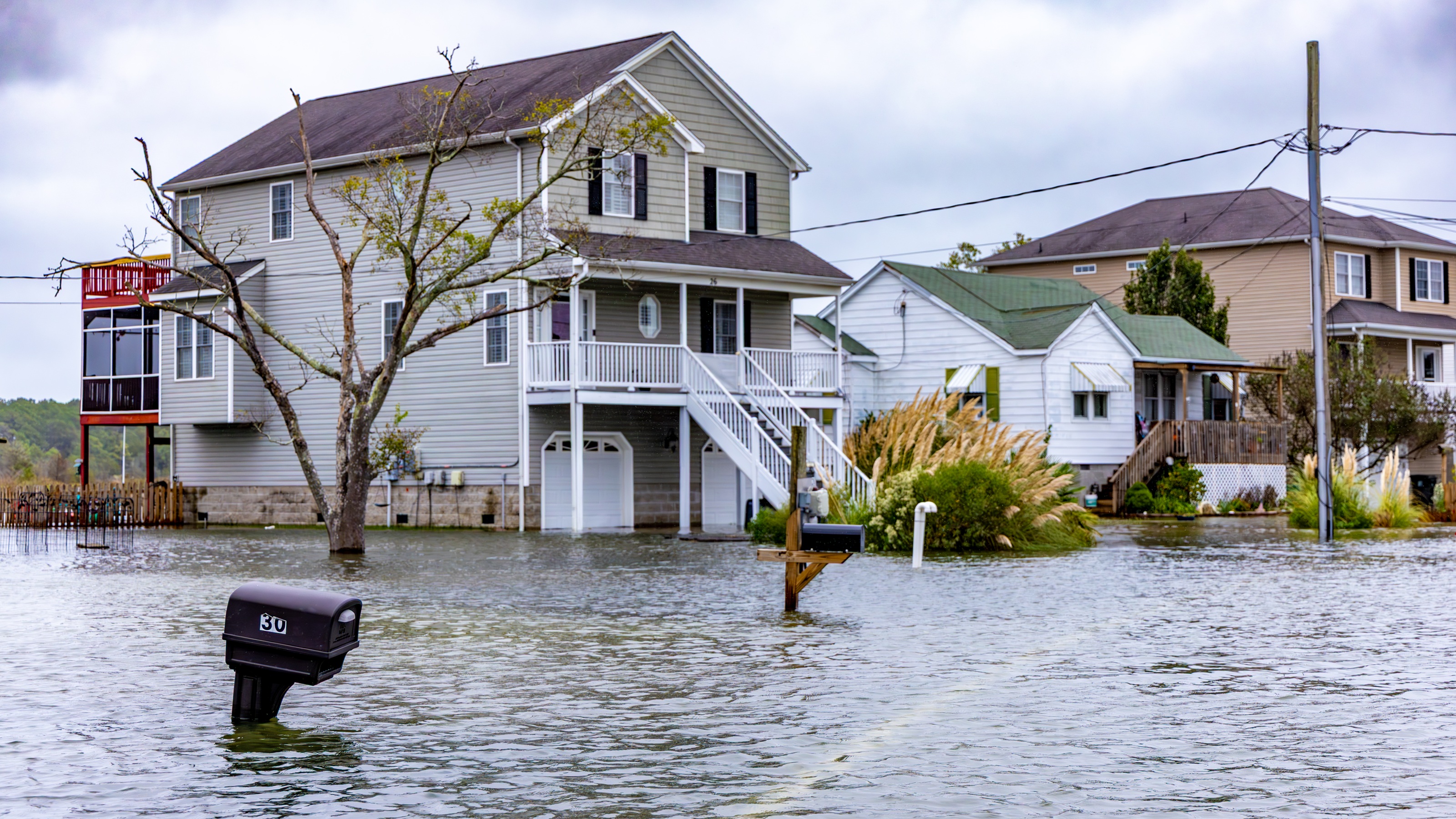The 9 Investment Risks You Need to Guard Against
To protect your investment portfolio, it's important to understand the different kinds of risks you're facing.


Years ago, when you thought about investing, the first image that came to mind was a frantic broker yelling “Buy!” or “Sell!”
Nowadays, you’re more likely to picture a financial adviser calmly reminding you to “think about risk.”
Few terms in personal finance are used as frequently, and for good reason. Every investment comes with a degree of risk — the possibility that it could hurt your financial welfare — even those that are considered conservative investments.
From just $107.88 $24.99 for Kiplinger Personal Finance
Be a smarter, better informed investor.

Sign up for Kiplinger’s Free Newsletters
Profit and prosper with the best of expert advice on investing, taxes, retirement, personal finance and more - straight to your e-mail.
Profit and prosper with the best of expert advice - straight to your e-mail.
Still, most people aren’t aware of the many different types of risk that are out there — or the role that diversifying those risks can have in building a better portfolio.
You can’t completely avoid risk — no investment is bullet-proof. But by taking time to understand risk — and timely steps to manage it — you can put yourself in a better position to meet your financial goals.
Here are some of the risks that can affect your nest egg.
- Market risk, or what is commonly referred to as systematic risk, affects the overall performance of the financial markets. If there’s a general decline in the stock market, for example, all your stocks would be affected, whether they’re large cap, small cap, mid cap, growth, etc. Because of our global economy, even foreign and emerging-market stocks could be influenced. It’s something over which you have no control, but you can help protect yourself by investing in different asset classes.
- Concentration risk is having too much exposure to one particular market segment. Some people think that if they invest in mutual funds, they’ve taken care of any diversification needs. But if the fund has invested too heavily in a certain sector, such as transportation or utilities, you’re still vulnerable. It’s important to spread out your investments over various industries and services to avoid this risk.
- Business risk is the possibility of seeing lower profits or even losses due to trends, new competition or unexpected events. It is common to see a problematic event unfold regarding a specific company and within hours, it has spread across various media platforms. Oftentimes, the negative sentiment is reflected in that company’s stock price. Other businesses in the same industry may not be affected at all or could even potentially benefit. You can diversify against business risk by not having too much invested in any one company.
- Inflation risk is often overlooked because it can creep up so slowly. You might notice that you’re paying the same price for a smaller bottle of juice at the grocery store or that your favorite candy bar is shrinking, but you might not equate it to your retirement portfolio. When the value of a country’s currency shrinks, however, it can erode your purchasing power, so it’s important to have a growth component in your portfolio to help you stay ahead of inflation.
- Interest rate risk is the possibility that an income-producing investment, such as a bond or preferred stock, could fall in value as a result of a rise in interest rates. In a rising interest rate environment, you can lower your risk by investing in bonds with shorter maturity dates or by creating a “bond ladder” with fixed-income securities that have varied maturity dates.
- Default risk refers to the chance that a bond issuer will not have the assets to pay back the bondholder at the end of the term. A lot of people think about default risk when they look at high-yield junk bonds issued by companies with lower credit ratings, but we’re also seeing a lot of default risk in municipal bonds across the country. It’s important to do your homework before you invest.
- Reinvestment risk occurs when the term expires on an investment (a bond, certificate of deposit or fixed annuity, for example) and, because of falling interest rates, similar opportunities aren’t available. You can diversify to reduce this risk by holding bonds with varied maturity dates and by working with your adviser to keep an eye out for new investments as others are about to expire.
- Political risk and regulatory risk come into play when a company or sector is adversely affected by an unfavorable government action. For better or worse, when government puts more rules on an industry — with clean energy bills, for example, or banking regulations — it can impact profitability. Your adviser can help you avoid the consequences by staying on top of political and business news so you know what’s coming.
- Currency risk becomes a factor when an investor must convert any profits from foreign assets into U.S. funds. The value of these assets could rise or fall depending on the strength of the dollar. Most people think this risk is limited to investments in overseas companies, but many U.S. businesses generate sales in foreign currency — and they are also susceptible. Be sure the company you invest in has a plan in place to help mitigate this risk.
The old saying “no risk, no reward” really is true for investing. But you can improve your odds of succeeding by knowing the different types of risk, identifying which investments are subject to those risks and then diversifying your portfolio in a way that spreads the risk around.
Talk to your financial adviser about risk-management strategies that can help protect your investments and your future.
Kim Franke-Folstad contributed to this article.
Profit and prosper with the best of Kiplinger's advice on investing, taxes, retirement, personal finance and much more. Delivered daily. Enter your email in the box and click Sign Me Up.

Eric Fritts is a Chartered Financial Consultant CHFC® with Elevated Wealth Management in Franklin, TN. He holds his Series 65 as well as his life and health license.
-
 Four Spa Retreats for Well-Heeled Retirees
Four Spa Retreats for Well-Heeled RetireesWe hand-picked these U.S. spa retreats for their serenity, amenities and dedication to the comfort of older travelers. All are located in the Continental U.S.
-
 Four Military Benefits That Have Helped My Family
Four Military Benefits That Have Helped My FamilyMilitary life can be challenging for servicemembers and their families, but they're offered some significant financial benefits to help cushion the blow.
-
 Why More Americans Are Redefining Retirement, Just Like I Did
Why More Americans Are Redefining Retirement, Just Like I DidRetirement readiness requires more than just money. You have a lot of decisions to make about what kind of life you want to live and how to make it happen.
-
 A Compelling Case for Why Property Investing Reigns Supreme, From a Real Estate Investing Pro
A Compelling Case for Why Property Investing Reigns Supreme, From a Real Estate Investing ProInvestment data show real estate's superior risk-adjusted returns and unprecedented tax advantages through strategies like 1031 exchanges and opportunity zones.
-
 Are You Retired? Here's How to Drop the Guilt and Spend Your Nest Egg
Are You Retired? Here's How to Drop the Guilt and Spend Your Nest EggTransitioning from a lifetime of diligent saving to enjoying your wealth in retirement tends to be riddled with guilt, but it doesn't have to be that way.
-
 Government Shutdown Freezes National Flood Insurance Program: What Homeowners and Buyers Need to Know
Government Shutdown Freezes National Flood Insurance Program: What Homeowners and Buyers Need to KnowFEMA's National Flood Insurance Program is unavailable for new customers, increased coverage or renewals during the government shutdown.
-
 Separating the Pros From the Pretenders: This Is How to Tell if You Have a Great Adviser
Separating the Pros From the Pretenders: This Is How to Tell if You Have a Great AdviserDo you leave meetings with your financial adviser feeling as though you've been bulldozed into decisions or you're unsure of what you're paying for?
-
 Five Downsides of Dividend Investing for Retirees, From a Financial Planner
Five Downsides of Dividend Investing for Retirees, From a Financial PlannerCan you rely on dividend-paying stocks for retirement income? You'd have to be extremely wealthy — and even then, the downsides could be considerable.
-
 I'm a CPA: Control These Three Levers to Keep Your Retirement on Track
I'm a CPA: Control These Three Levers to Keep Your Retirement on TrackThink of investing in terms of time, savings and risk. By carefully monitoring all three, you'll keep your retirement plans heading in the right direction.
-
 Debunking Three Myths About Defined Outcome ETFs (aka Buffered ETFs)
Debunking Three Myths About Defined Outcome ETFs (aka Buffered ETFs)Defined outcome ETFs offer a middle ground between traditional equity and fixed-income investments, helping provide downside protection and upside participation.